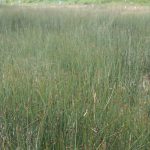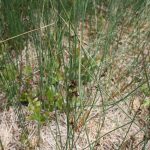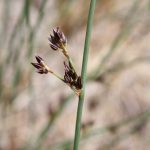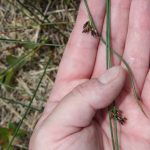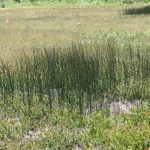Mountain rush
Prepared by Jennifer L. D’Appollonio, Assistant Scientist, University of Maine, Orono, ME 04469. Updated February 2018.
Scientific name: Juncus arcticus Willd. ssp. littoralis (Engelm.) Hultén; old Juncus balticus Willd.
Common name(s): mountain rush, Baltic rush
Link(s): USDA PLANTS Profile, NPIN Profile, Go Botany
Images: (to see enlargements [PC]: click on image, then right click and choose “view image”)
- can form dense colonies
- early June, blueberry newly emerged
- inflorescence, position on stem
- end of June
Description:
– perennial
-rhizomatous
-tufted
-leaf sheaths are clustered at the base
- 2-15 cm long
- red to light to dark brown
-lowest bract of the mountain rushinflorescence is round and 2 to 20 cm
-Flowers are greenish or brownish
- sessile to pedicellate
– one of two genera of rushes in ME; Juncus is not hairy, the other (Luzula) is hairy
Habitat:
-wetlands
Agriculture:
-fixes nitrogen
-erosion prevention-low palatability
-resistant to grazing pressure
-phenotypic plasticity to flooding and drought stress
-wildlife habitat and food
– Rushes help improve habitat for amphibians and spawning areas for fish
– Attempts at harvesting during times of heavy rain or flooding are likely to fail
Natural History:
-the stems are used to make baskets
-Juncus shoots were eaten raw, roasted in ashes, or boiled by Maidu, Luiseño, and others
Sources:
Stevens, M., Hoag, C., Tilley, D., and L. St. John. 2012.Plant Guide for mountain rush (Juncus arcticus ssp. littoralis). USDA-Natural Resources Conservation Service, Aberdeen Plant Materials Center. Aberdeen, Idaho 83210.
Acknowledgement(s):
Eric T. Doucette, Ph.D. – Assistant Professor of Biology, MA College of Liberal Arts, North Adams, MA (updated Feb 2018)

